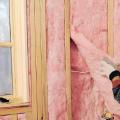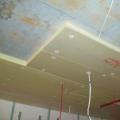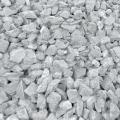How to make glass
Glass production began at least as early as the third millennium BC, as evidenced by glass particles found in Mesopotamia. Glass making, once a rare art, has become a widespread industry where glass products are used in both commercial and domestic applications, as glass containers, insulating material, fiber reinforcement, lenses and in arts and crafts. Although the materials used to make glass may vary, the basic process of how glass is made remains the same and is described below.
Take enough siliceous sand. Also called quartz sand, silica sand is the main component in glass production. Glass without iron impurities is used to make clear glass, since iron, when present, gives the glass a greenish tint. If you cannot find sand without iron impurities, then the tint effect can be eliminated by adding a small amount of manganese dioxide.
Add sodium carbonate and calcium oxide to the sand. Sodium carbonate (or soda) reduces the temperature required to produce glass on an industrial scale. However, it allows water to penetrate through the glass, so sodium carbonate or calcium hydroxide is added to neutralize this property. Magnesium and/or aluminum oxide can also be added to make the glass more durable. As a rule, these additives form no more than 26-30 percent of the glass batch.
To improve the quality of glass, add other chemical elements according to the purpose of its use. The most common additive for the production of decorative glass is lead oxide, which adds shine to transparent glass products, as well as ductility, which makes the glass cutting process easier, and, in addition, reduces the melting point. Spectacle lenses may contain lanthanum oxide due to its refractive properties, while iron helps the glass absorb heat.
Crystal can contain up to 33 percent lead oxide; however, the more lead oxide, the more skill it takes to shape the molten glass, so many crystal makers opt for less lead in the glass.
If you need to make glass of a certain color, add chemicals to it. As mentioned above, iron impurities in quartz sand give the glass a greenish tint, so iron oxide, like copper oxide, is added to increase the green tint. Sulfur compounds give a yellowish, amber, brownish or even blackish tint to glass, depending on how much carbon or iron is added to the mixture.
Place the mixture in a good heat-resistant crucible or container.
Melt the mixture until liquid. To make industrial quartz glass, melting is carried out in a gas furnace, while specialty glass can be produced using an electric melting furnace, kettle furnace or kiln.

Quartz sand without additives turns into glass at a temperature of 2,300 degrees Celsius (4,174 degrees Fahrenheit). By adding sodium carbonate (soda), the temperature is reduced to the required level for making glass, 1,500 degrees Celsius (2,732 degrees Fahrenheit).
Remove bubbles and ensure homogeneity of the molten glass mass. This means stirring the mixture until it becomes thick and adding chemicals such as sodium sulfate, sodium chloride or antimony trioxide.
Shape of molten glass. Shaping glass can be done in one of several ways: molten glass is poured into a mold and cooled in it. This method was used by the Egyptians and is currently used to make lenses.
Most of the molten glass can accumulate at the end of a hollow tube, into which air is then blown while rotating the tube. The shape of the glass is given by the air that enters through the tube, the force of gravity attracts the molten glass and the glass blower uses various tools to work with the molten glass.
Molten glass can be poured into a bath of molten tin as a base and pressurized with nitrogen to shape and shine the glass. Glass made using this method is called polished plate glass, and this is the method by which window glass has been made since the 1950s.
Leave the glass to cool.
To increase the strength of glass, you need to resort to heat treatment. This process is called firing, and it removes damage that occurred during the cooling process of the glass. Once this process is complete, the glass can be coated, laminated, or otherwise treated to improve its strength and durability.
Annealing is a further manufacturing process in which polished glass of a given shape is placed in a furnace heated to at least 600 degrees Celsius (1.112 degrees Fahrenheit) and then quickly cooled (“tempered”) using a strong stream of high-pressure air. . Annealed glass breaks into small pieces at 6,000 pounds per square inch (psi), while tempered glass breaks into small pieces at at least 10,000 psi and typically around 24,000. psi
Crushed old glass shards can be added to the glass mixture before the glass is melted to recycle it into new glass. Old glass or "glass scrap" must first be tested for impurities that could weaken the properties of new glass if introduced into it.
Components you will need:
- quartz sand (silicon dioxide);
- sodium carbonate (soda);
- calcium oxide (calcium hydroxide);
- other oxides and salts: (for example, magnesium oxide, aluminum oxide, iron oxide, magnesium or sodium oxide, or calcium salts as desired);
- lead oxide (optional);
- heat-resistant crucible, shaped or hollow tube;
- kiln or glass heating cabinet - this completes glass production.
 Construction materials and list of works
Construction materials and list of works Proper insulation of a wooden ceiling in a private house
Proper insulation of a wooden ceiling in a private house What types of crushed stone are there?
What types of crushed stone are there?